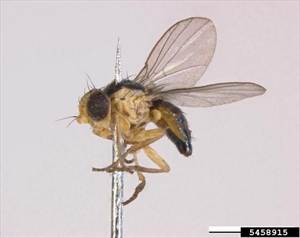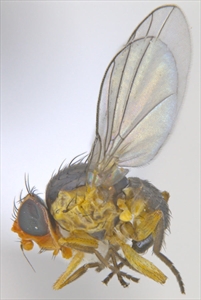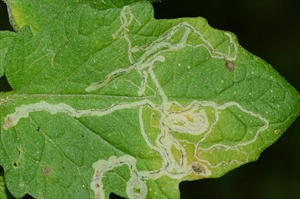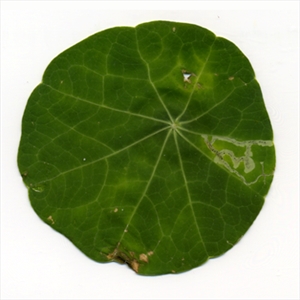- Worldwide distribution. There are several types attacking cucumber, bean, tomato, cabbage, and other families, and many plants in the cut flower trade. Damage is done by the larvae or maggot; the adult is a fly.
- Eggs laid beneath leaf surface; larvae hatch and mine the leaves, which dry up and fall early; loss of leaves may cause sunburn. Damage also done by female using ovipositors to feed on sap (both sexes feed on nectar).
- Biosecurity: not all species in all countries.
- Natural enemies: many exist giving effective control.
- Cultural control: remove weeds as they are leafminer hosts; collect and destroy trash after harvest.
- Chemical control: Bt (Bacillus thuringiensis), spinosad, abamectin, cyromazine; resistance to pyrethroids exists.










